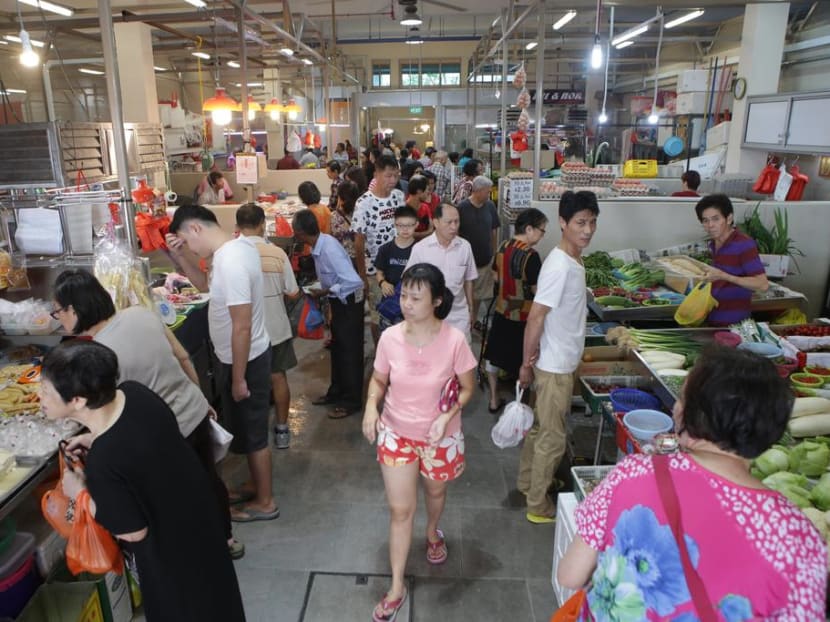To woo youngsters, promote wet markets as eco-friendly alternative to supermarkets
I read with concern about the slowing business at wet markets (“As young home cooks seek convenience, the fate of Singapore’s wet markets hangs in the balance”; June 21).
It will be a loss for Singaporeans if, as a stallholder lamented in the report, only supermarkets were left standing in future.

Wet markets can roll out a bring-your-own-container policy to reduce the amount of packaging for their goods, the writer says.
I read with concern about the slowing business at wet markets (“As young home cooks seek convenience, the fate of Singapore’s wet markets hangs in the balance”; June 21).
It will be a loss for Singaporeans if, as a stallholder lamented in the report, only supermarkets were left standing in future.
Wet markets are an icon of Singapore’s food culture. Like hawker centres, they are communal spaces where Singaporeans interact with fellow home cooks in the neighbourhood.
One way to attract younger customers is to promote wet markets as an eco-friendly alternative to supermarkets.
At wet markets right now, customers buy only the quantity of food they need, cutting the likelihood of food waste at home. Unlike supermarkets, where many products are pre-packed, patrons of wet markets can request what they need for the day from stallholders. For example, most people need only a few pieces of chilli padi, but in a supermarket, these come in 100g packets.
Buying in small and exact quantities is especially helpful for young people and couples who cook for one or two persons.
Wet markets can also roll out a bring-your-own-container policy to reduce the amount of packaging for their goods. This will draw many environmentally conscious Singaporeans.
Stallholders can offer a discount — say, 10 cents — to customers who bring containers. They can also sell reusable bags and containers alongside their products.
Posters should be used to remind customers that their neighbours are bringing containers and that they should, too. There could also be a system to track the number of bags and containers saved on a scoreboard, to underline the communal effort to save the environment.
The National Environment Agency (NEA), which oversees wet markets, should take the lead in spreading the word via social and mainstream media.
The Health Promotion Board has done a good job with the Healthy 365 mobile application, allowing users to amass points and rewards when they buy healthy food. Could the NEA consider a similar move?
We should be concerned about the rising levels of food waste and plastic use in Singapore.
Food waste, for instance, has jumped 40 per cent over the last decade. The authorities have also warned that the landfill on Semakau island will run out of space by 2035.
We need to change how we shop and consume quickly. Our wet markets, which are smaller and thus more nimble and flexible than supermarkets, can lead the way towards a zero-waste Singapore.
Have views on this issue or a news topic you care about? Send your letter to voices [at] mediacorp.com.sg with your full name, address and phone number.









